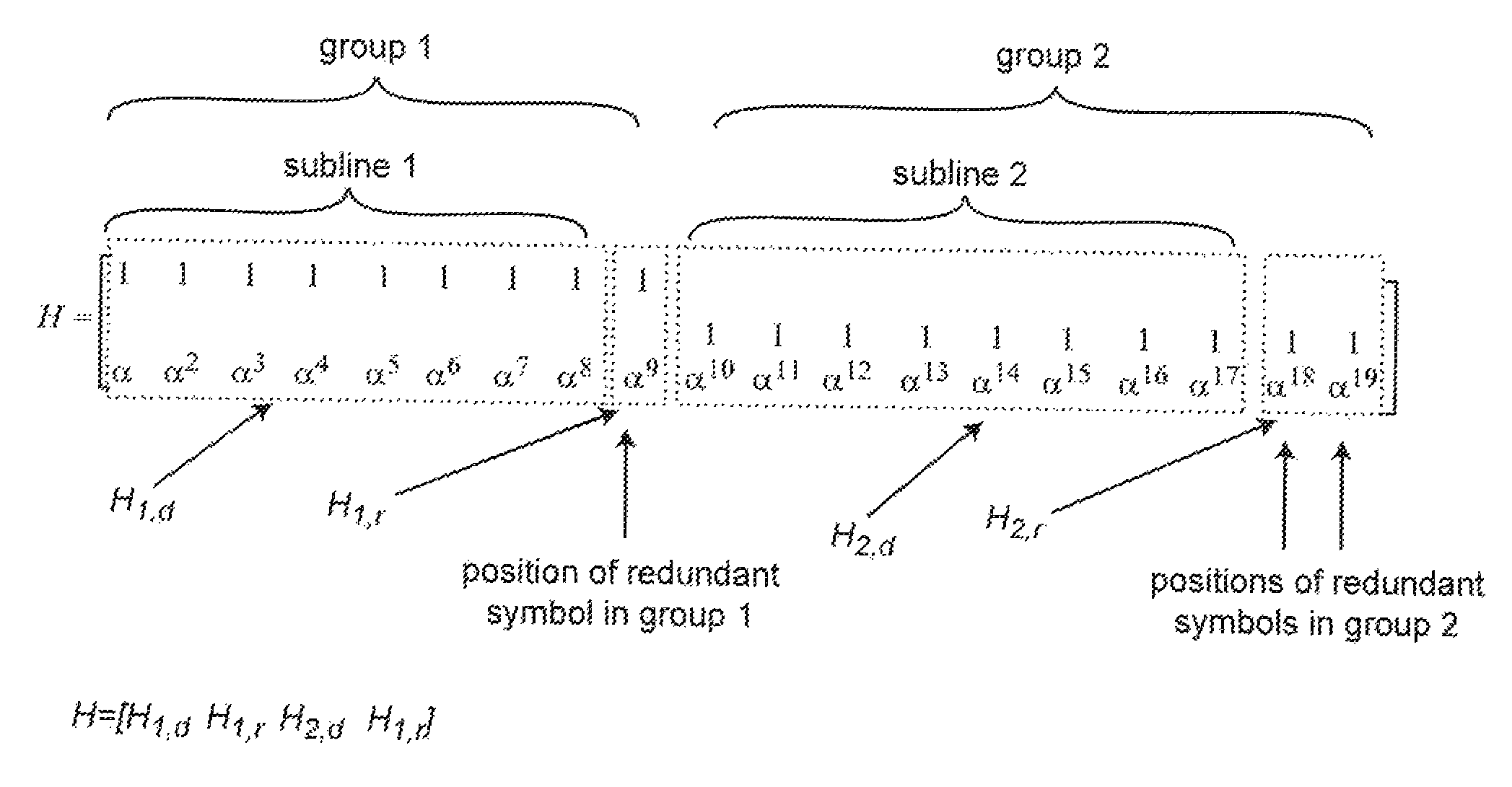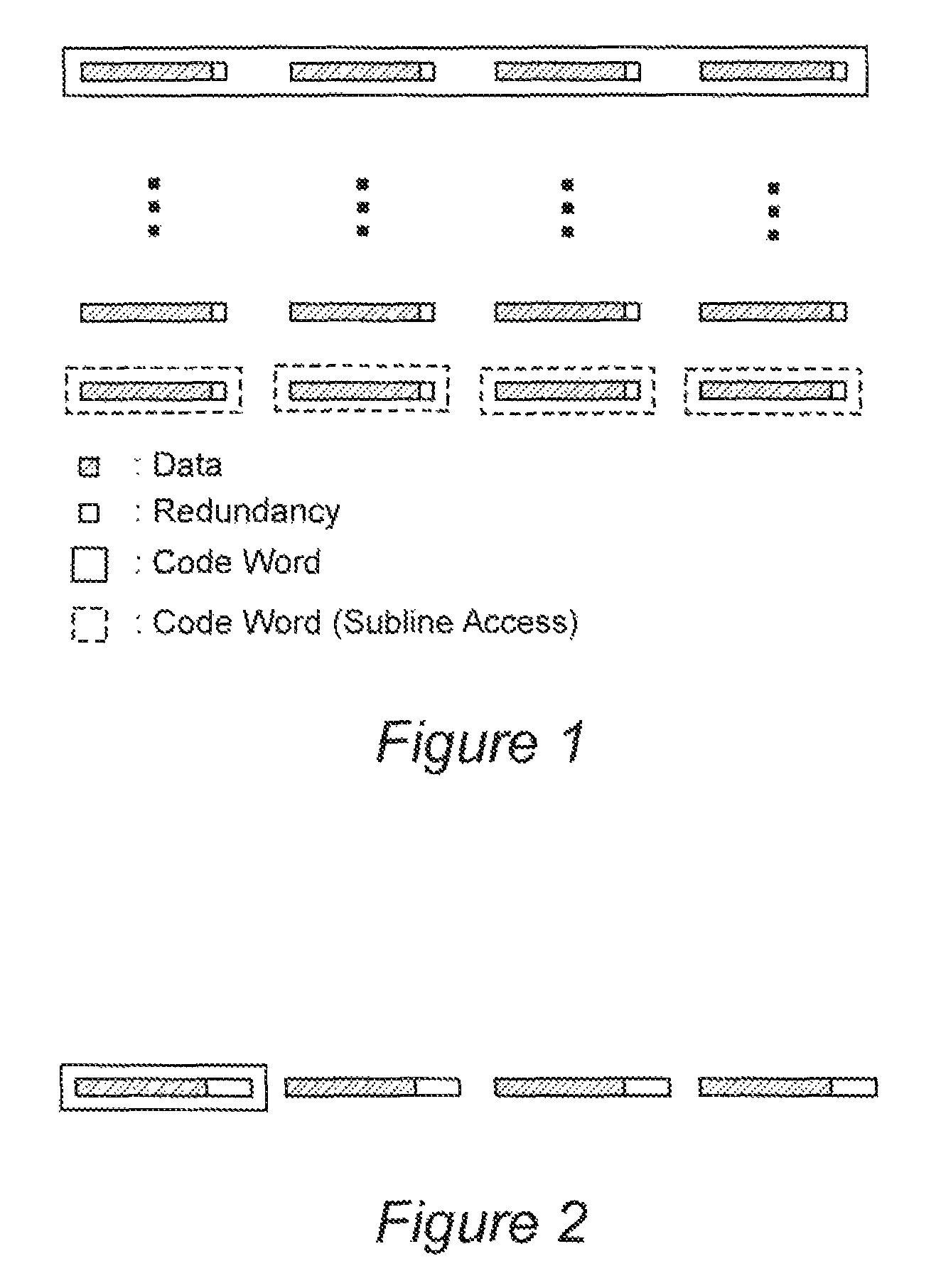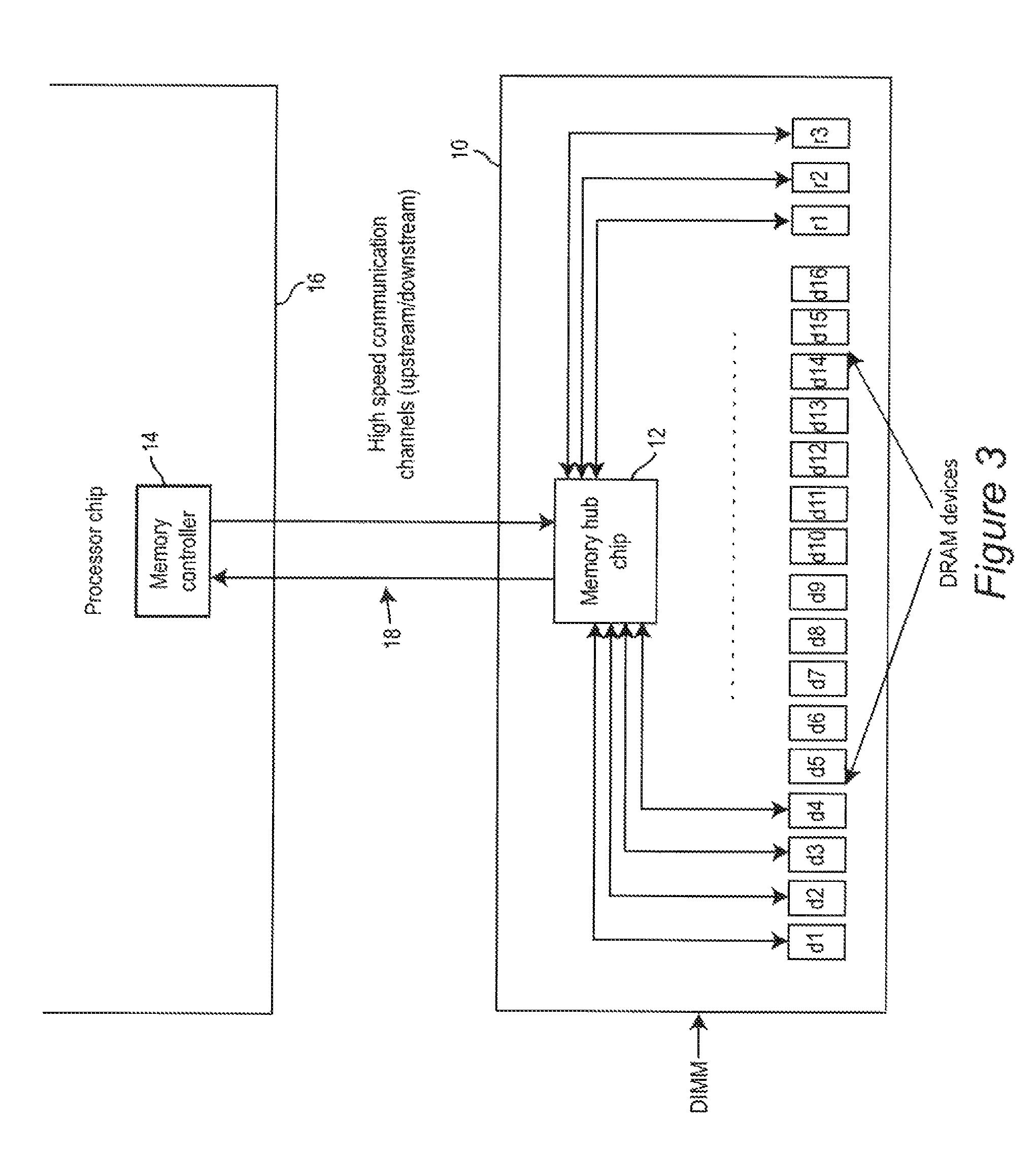Error control coding methods for memories with subline accesses
a technology of error control and memory access, applied in the field of error control coding methods for computer memory systems, can solve the problems of requiring a large overhead, unable to distribute the overhead evenly among the two groups, and single chip error detection and not being corrected, so as to achieve the effect of longer latency
- Summary
- Abstract
- Description
- Claims
- Application Information
AI Technical Summary
Benefits of technology
Problems solved by technology
Method used
Image
Examples
Embodiment Construction
[0030]In order to describe our preferred embodiment, we will rely on the discussion in the background section above, we will maintain our assumption that our memory system is built using discrete DRAM devices, packaged as DIMMs, and where each DRAM is a ×8, burst 8 device. As previously stated, for the design shown in FIG. 3, a read operation from the DIMM results in 128 B worth of data supplied, not including stored redundancy. We now assume that we wish to access information on a 64 B granularity. To accomplish this, we will employ the alternate DIMM structure in FIG. 6, where two independent groups of DRAM devices can be accessed at any given time, and where Group 1 has one additional redundant chip and Group 2 has two additional redundant chips. In this example, the line size is 128 B and the desired subline size is 64 B. In general, one says that a memory possesses subline accesses if a request for a reading or storing a subline's worth of data in the memory can be accomplished...
PUM
 Login to View More
Login to View More Abstract
Description
Claims
Application Information
 Login to View More
Login to View More - R&D
- Intellectual Property
- Life Sciences
- Materials
- Tech Scout
- Unparalleled Data Quality
- Higher Quality Content
- 60% Fewer Hallucinations
Browse by: Latest US Patents, China's latest patents, Technical Efficacy Thesaurus, Application Domain, Technology Topic, Popular Technical Reports.
© 2025 PatSnap. All rights reserved.Legal|Privacy policy|Modern Slavery Act Transparency Statement|Sitemap|About US| Contact US: help@patsnap.com



